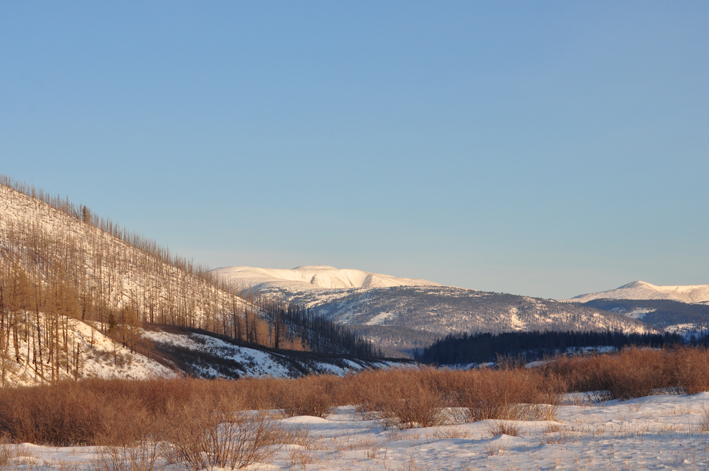Ikh Khorig on:
[Wikipedia]
[Google]
[Amazon]
The Ikh Khorig (), or Great Taboo, is a area in the Khentii Aimag (province) of
 According to ''
According to ''
Mongolia
Mongolia is a landlocked country in East Asia, bordered by Russia to the north and China to the south and southeast. It covers an area of , with a population of 3.5 million, making it the world's List of countries and dependencies by po ...
, believed by some to be the location of Genghis Khan's grave. It has been carefully guarded for most of its history, and it is only since the late 1980s that the area has been open to archaeologists
Archaeology or archeology is the study of human activity through the recovery and analysis of material culture. The archaeological record consists of Artifact (archaeology), artifacts, architecture, biofact (archaeology), biofacts or ecofacts, ...
.
Background
 According to ''
According to ''The Secret History of the Mongols
The ''Secret History of the Mongols'' is the oldest surviving literary work in the Mongolic languages. Written for the Borjigin, Mongol royal family some time after the death of Genghis Khan in 1227, it recounts his life and conquests, and parti ...
'', Genghis Khan chose the area as his final resting place when he went hunting near the Burkhan Khaldun
The Burkhan Khaldun ( ) is one of the Khentii Mountains in the Khentii Province of northeastern Mongolia. The mountain or its locality is believed to be the birthplace of Genghis Khan as well as his tomb. It is also the birthplace of one of h ...
mountain in the Khentii Mountains of his homeland. He sat down to rest under a tree, and was so impressed by the scenery that he said: "What a beautiful view! Bury me here when I pass away." Burkhan Khaldun was also greatly important to Genghis Khan because of his origins near there and because he escaped from Merkit
The Merkit (; ; ) was one of the five major tribal confederations of Mongol
It is not known whether he really was buried there, but the
Mongols
Mongols are an East Asian ethnic group native to Mongolia, China ( Inner Mongolia and other 11 autonomous territories), as well as the republics of Buryatia and Kalmykia in Russia. The Mongols are the principal member of the large family o ...
took several steps to give the impression that he was. The area, already made difficult to reach by a series of mountains covered in thick forest, was declared sacred, and off limits to everyone except family members and the Darkhad, a group of elite warriors and their families, who were given the task of ensuring that no one else entered under penalty of death. The only legitimate reason for entrance was to bury a relative of Genghis Khan.
History
The Darkhads and their descendants faithfully carried out their assignment for more than 700 years, from the Khan's death in 1227 until the establishment of theMongolian People's Republic
The Mongolian People's Republic (MPR) was a socialist state that existed from 1924 to 1992, located in the historical region of Outer Mongolia. Its independence was officially recognized by the Nationalist government of Republic of China (1912†...
(a satellite state
A satellite state or dependent state is a country that is formally independent but under heavy political, economic, and military influence or control from another country. The term was coined by analogy to planetary objects orbiting a larger ob ...
of the USSR
The Union of Soviet Socialist Republics. (USSR), commonly known as the Soviet Union, was a List of former transcontinental countries#Since 1700, transcontinental country that spanned much of Eurasia from 1922 until Dissolution of the Soviet ...
) in 1924. The Soviets
The Soviet people () were the citizens and nationals of the Soviet Union. This demonym was presented in the ideology of the country as the "new historical unity of peoples of different nationalities" ().
Nationality policy in the Soviet Union ...
feared that if the region were made publicly accessible, memories of Genghis Khan would encourage Mongolian nationalism
Nationalism is an idea or movement that holds that the nation should be congruent with the state. As a movement, it presupposes the existence and tends to promote the interests of a particular nation, Smith, Anthony. ''Nationalism: Theory, I ...
, so they declared the land a 'Highly Restricted Area' and cordoned off 10,400 square-kilometers of surrounding land.
Modern excavations
The first archeological expedition to the region was the 1989 "Three Rivers" expedition, which was carried out by a joint Mongolian–Japan
Japan is an island country in East Asia. Located in the Pacific Ocean off the northeast coast of the Asia, Asian mainland, it is bordered on the west by the Sea of Japan and extends from the Sea of Okhotsk in the north to the East China Sea ...
ese team with the support of the Yomiuri Shimbun
The is a Japanese newspaper published in Tokyo, Osaka, Fukuoka, Fukuoka, Fukuoka, and other major Japanese cities. It is one of the five major newspapers in Japan; the other four are ''The Asahi Shimbun'', the ''Chunichi Shimbun'', the ''Ma ...
newspaper. The team worked from 1989 to 1992 using ultrasound
Ultrasound is sound with frequency, frequencies greater than 20 Hertz, kilohertz. This frequency is the approximate upper audible hearing range, limit of human hearing in healthy young adults. The physical principles of acoustic waves apply ...
technology, which enabled them to find 1380 possible graves of Mongolian nobles. The idea of archaeological excavations, however, offends many Mongolians, who due to either superstition or respect for the leader believe that the Khan's resting place should be left undisturbed.
References
{{Reflist Genghis Khan Geography of Mongolia Archaeological sites in Mongolia